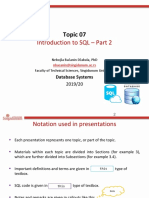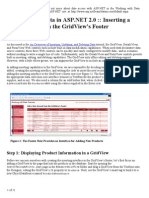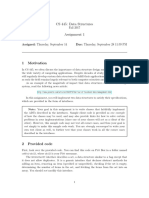0% found this document useful (0 votes)
23 views22 pagesSQL Cheat Sheet
This document provides a comprehensive SQL cheat sheet covering various commands and operations including creating and managing databases, tables, and data manipulation. It details querying techniques, filtering data, using SQL operators, and applying constraints, along with examples for each command. Additionally, it discusses joins, functions, subqueries, views, indexes, and transaction management in SQL.
Uploaded by
vgvaishali2024Copyright
© © All Rights Reserved
We take content rights seriously. If you suspect this is your content, claim it here.
Available Formats
Download as DOCX, PDF, TXT or read online on Scribd
0% found this document useful (0 votes)
23 views22 pagesSQL Cheat Sheet
This document provides a comprehensive SQL cheat sheet covering various commands and operations including creating and managing databases, tables, and data manipulation. It details querying techniques, filtering data, using SQL operators, and applying constraints, along with examples for each command. Additionally, it discusses joins, functions, subqueries, views, indexes, and transaction management in SQL.
Uploaded by
vgvaishali2024Copyright
© © All Rights Reserved
We take content rights seriously. If you suspect this is your content, claim it here.
Available Formats
Download as DOCX, PDF, TXT or read online on Scribd
/ 22






















































































